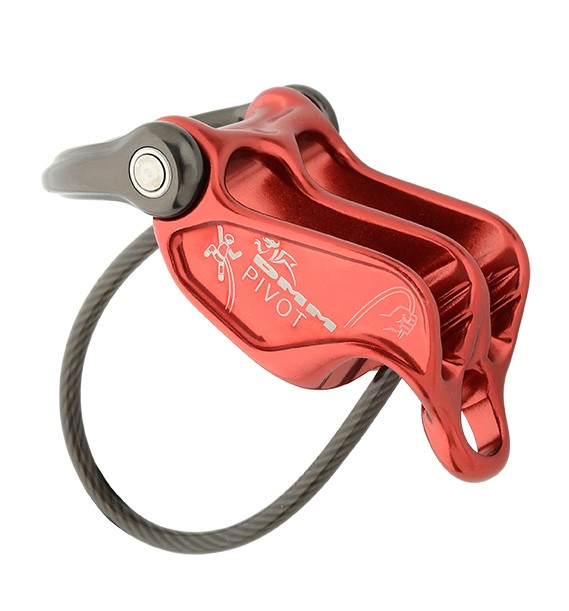
DMM Pivot - A Better Mouse Trap
By Chris Miller, ACMG Mountain Guide

Background
When I started rock climbing, gear options were limited, most of it coming from Europe. The exception was Clog from Wales. Their gear was functional and durable, I still own a locker and some of the first nuts and hexagons produced for rock climbing. DMM shares some of the Clog DNA and maintains the early traits of function and durability but adds attractive esthetics to their innovations. Their equipment is appealing in both looks and feel, this is a case where form complements function.
Over the years we have seen many iterations of the manual braking device, from the original Sticht plate, to the early Lowe Tuber and ultimately the current standard that combines the auto-braking ability of devices like the New Alp Magic Plate with a manual-braking tube.
State of the Art
Most of the dual mode braking devices look and act similar in manual mode. They vary somewhat depending on the specific milling or rope size allowance but they are more the same than different. In auto-braking mode, differences become more apparent. Creating slack or lowering with these dual mode devices in auto-braking mode can be problematic. Although ratcheting the braking biner or levering with a carabiner in the biner cavity might create some slack or allow you to lower a short distance, it is a bit hit or miss with neither option working with some devices when dealing with a heavy suspended load. This often meant rigging some sort of load transfer to release the device and probably installing a separate lowering system.
A Better Mouse Trap
The DMM Pivot changes that approach. Its unique design shifts the lever arrangement, bringing the point of rotation closer to the load. In all the tests I've done, this design allows for a much easier and more controlled reversal, be it to give slack or to manage a full lower. Other devices under similar load were either less manageable or in some cases jammed, making it impossible to give slack, let alone lower. I suspect that an additional aspect of design contributing to the ease of use, is the shape and depth of the rope channels and braking cleats. Devices that jammed had longer deeper rope channels and more pronounced braking cleats.
The DMM Pivot is a better mouse trap and advances the state of the art. This is no small feat and DMM is justified in singing its praises. The Pivot is well-designed, highly functional, and has become my go-to device.
Future
I believe there is still room for improvement in dual mode devices. We need something that provides the effortlessness of rope movement attained in an auto-braking plate device such as a Kong GiGi, along with the ease of lowering provide by the Pivot; combined with a manual braking tube. This would be the ideal addition to the guides rack.
Stats:
Weight 72g.
Compatible with half ropes from 7.3mm to 9.2mm
Compatible with single ropes from 8.7mm to 11mm
Check out their video:
https://vimeo.com/122737551
Reviews
- Tecnica Forge S GTX hiking boots
- Garmin inReach Mini
- Black Diamond ATC Pilot
- Arc'teryx Voltair 30 Airbag
- Osprey Kamber Ski Pack
- Osprey Talon Pack
- Julbo Explorer
- G3 Alpinist Glide Skins
- Pieps Micro Avalanche Beacon
- Adidas Tycane Sunglasses
- G3 FINDr 102 Ski and Arc'teryx Procline Ski Boot
- DMM Pivot Belay Device
- Icebreaker Coriolis II Hooded Windbreaker

